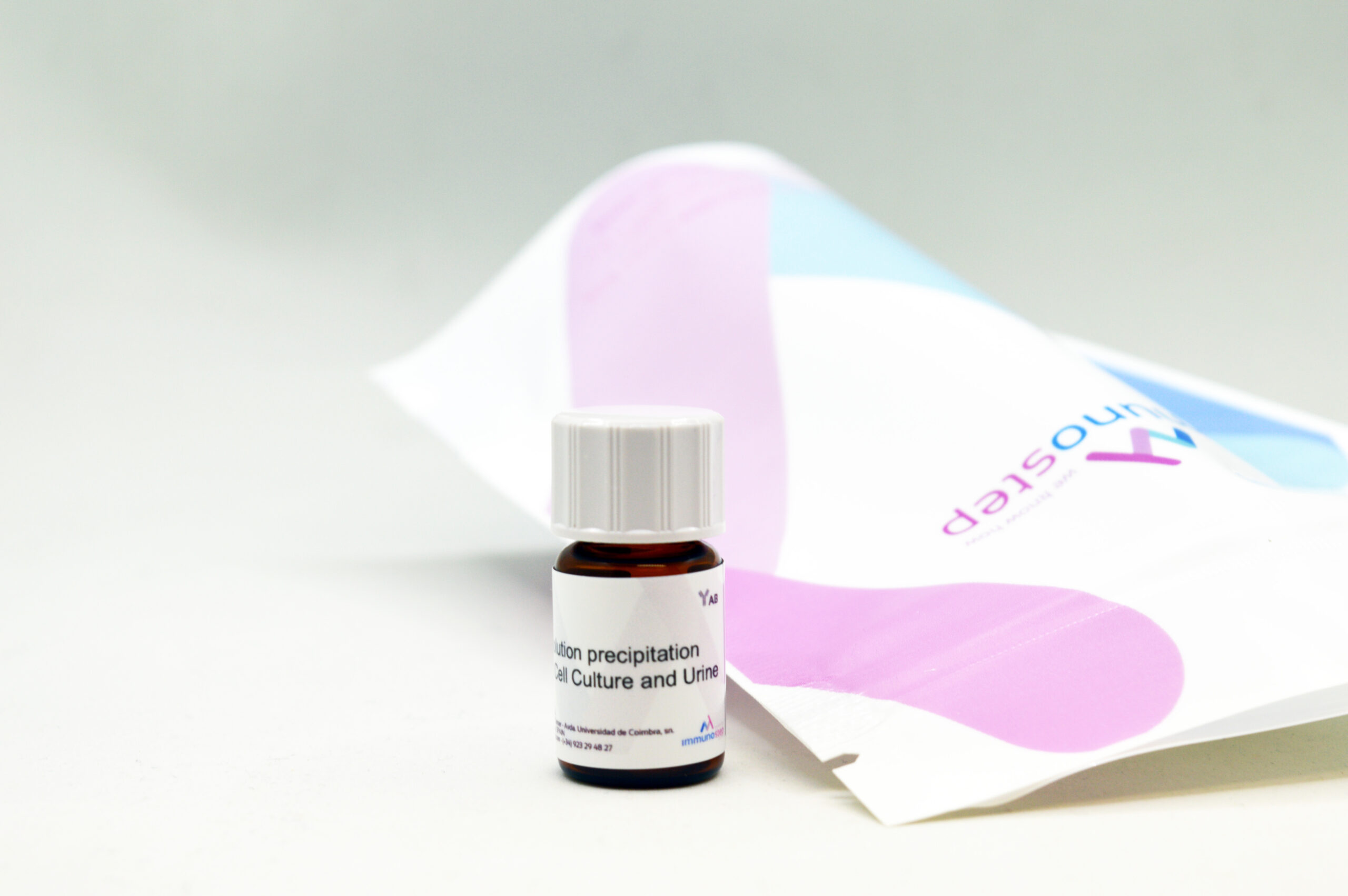- Products
- Oncohematology
- Antibodies
- Kits
- CAR T-cell
- Euroflow
- Single reagents
- Request info
- Resources and support
- Immunology
- Antibodies
- Single reagents
- Cross match determination (FCXM)
- FcεR1
- Ig subclasses
- Single reagents
- Kits
- TiMas, assessment of tissue macrophages
- Request info
- Resources and support
- Antibodies
- Exosomes
- Accesory reagents
- Software
- Oncohematology
- Services
- Peptide Production
- Design
- Modification
- Protein Services
- Expression and purification
- Freeze drying
- Monoclonal And Polyclonal Antibody Development
- Monoclonal
- Policlonal
- Specialized antibody services
- OEM/Bulk production
- Purification
- Conjugation
- Custom Exosome Services
- Isolation and purification
- Characterization
- Peptide Production
- Shop
- Support
- About Us
- Contact
Exosome Precipitation Solution from Cell Culture and Urine
220,00 € excl.VAT
The biological characterization of exosomes requires in most cases the isolation of intact exosomes. In this sense, a large number of methods have been developed for the isolation of exosomes from biological fluids, among which are ultracentrifugation, chromatography, filtration, immunological separation and polymer-based precipitation. Each one of these methods presents its advantages and disadvantages, being the duration of the method, the need to have specialized equipment, the volume of sample, the purity and the low recovery, some of the disadvantages that these methods present. The solution of precipitation of Exosomes (EPS) is framed within the methods of precipitation of exosomes based on polymers, and among its main advantages it stands out its simplicity, speed, reproducibility, the slight effect in isolated exosomes and the use of neutral pH. And thanks to its specific formulation, it limits some of the disadvantages of this type of methods such as the co-isolation of non-vesicular contaminants, including lipoproteins and the presence of polymer material that might not be compatible with the downstream analysis.
Additional information
| Size | |
|---|---|
| Format | |
| Species Reactivity | |
| Tested Applications | |
| Regulatory Status | |
| Protocol | sm (surface marker) |
| Storage | Store in the dark at 2-8 °C. |
| Content kit | Exosome Precipitation Solution. |
| Buffer | The reagent is provided in aqueous buffered solution, and ≤0.09% sodium Azide (NaN3). |
Recomended usage
Immunostep’s Exosome Precipitation Solution, is intended for the extracellular vesicles (EVs) and specifically exosomes (~50-150 nm) from cell culture media and biofluids (plasma, serum, urine).
References
| Product description | Reference | Title | Authors | Journal | Year | |
|---|---|---|---|---|---|---|
| Product description | Reference | Title | Authors | Journal | Year |
Related products
-
FcR blocking Reagent
162,00 € excl.VAT – 264,00 € excl.VAT Select options This product has multiple variants. The options may be chosen on the product page -
Exosome Precipitation Solution from Plasma (with Thrombin)
305,00 € excl.VAT Select options -
Exosome Precipitation Solution from Plasma and Serum
190,00 € excl.VAT Select options -
INTRACELL
146,72 € excl.VAT – 520,00 € excl.VAT Select options This product has multiple variants. The options may be chosen on the product page
